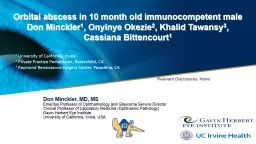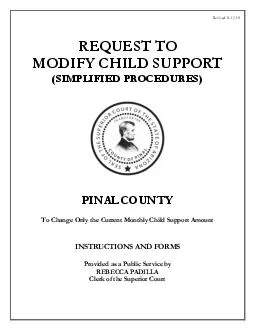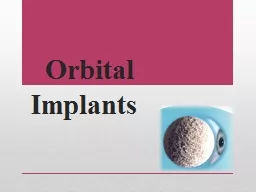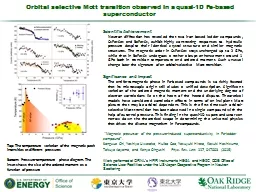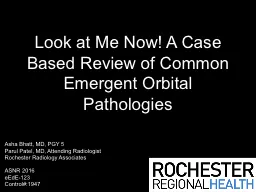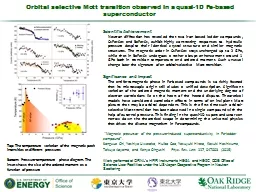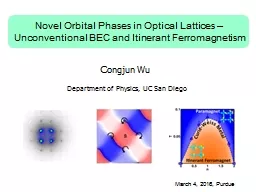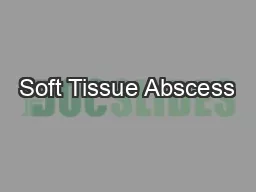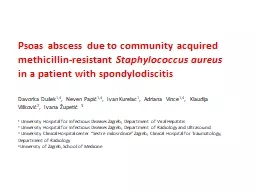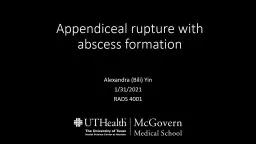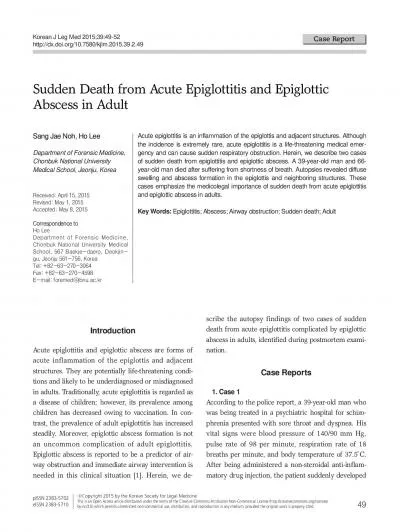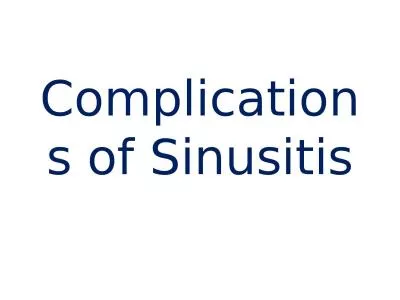PPT-Orbital abscess in 10 month old immunocompetent
Author : amey | Published Date : 2022-05-14
male Don Minckler 1 Onyinye Okezie 2 Khalid Tawansy 3 Cassiana Bittencourt 1 Don Minckler MD MS Emeritus Professor of Ophthalmology and Glaucoma Service Director
Presentation Embed Code
Download Presentation
Download Presentation The PPT/PDF document "Orbital abscess in 10 month old immunoco..." is the property of its rightful owner. Permission is granted to download and print the materials on this website for personal, non-commercial use only, and to display it on your personal computer provided you do not modify the materials and that you retain all copyright notices contained in the materials. By downloading content from our website, you accept the terms of this agreement.
Orbital abscess in 10 month old immunocompetent: Transcript
Download Rules Of Document
"Orbital abscess in 10 month old immunocompetent"The content belongs to its owner. You may download and print it for personal use, without modification, and keep all copyright notices. By downloading, you agree to these terms.
Related Documents

